Showing Spotlights 1017 - 1024 of 2877 in category All (newest first):
 Currently in the clinic and in clinical development, there is heavy emphasis placed on understanding how drugs can be 'complementary'. That is to say, what combination of drugs will be most effective in killing tumor cells and overcome potential resistance mechanisms. In fact, adding synergistic combinations of drugs is reshaping how cancer is treated, even in the context of immunotherapy. A new study provides critical evidence that complementary drugs must be in spatial proximity to truly exert their synergistic potential.
Currently in the clinic and in clinical development, there is heavy emphasis placed on understanding how drugs can be 'complementary'. That is to say, what combination of drugs will be most effective in killing tumor cells and overcome potential resistance mechanisms. In fact, adding synergistic combinations of drugs is reshaping how cancer is treated, even in the context of immunotherapy. A new study provides critical evidence that complementary drugs must be in spatial proximity to truly exert their synergistic potential.
Jun 28th, 2016
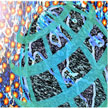 Education has long been recognized as an important factor for growing the fields of nanoscience and nanotechnology and solidifying and expanding their roles in the global economy. Leading researchers from the field discuss innovative learning models that are being applied at the undergraduate level in order to train future leaders at the interface of engineering and management. They have a set of five recommendations to improve the current situation.
Education has long been recognized as an important factor for growing the fields of nanoscience and nanotechnology and solidifying and expanding their roles in the global economy. Leading researchers from the field discuss innovative learning models that are being applied at the undergraduate level in order to train future leaders at the interface of engineering and management. They have a set of five recommendations to improve the current situation.
Jun 21st, 2016
 Researchers have shown, using a mouse model of osteoarthritis, that curcumin loaded nanoparticles topically applied to arthritic knees stopped the progression of the disease and eliminated associated pain by locally delivering curcumin to the fat pad associated with the knee cap. The study also demonstrated several osteoarthritis relevant inflammatory pathways were suppressed by curcumin, including those that result in the production of proteins that destroy cartilage.
Researchers have shown, using a mouse model of osteoarthritis, that curcumin loaded nanoparticles topically applied to arthritic knees stopped the progression of the disease and eliminated associated pain by locally delivering curcumin to the fat pad associated with the knee cap. The study also demonstrated several osteoarthritis relevant inflammatory pathways were suppressed by curcumin, including those that result in the production of proteins that destroy cartilage.
Jun 17th, 2016
 First there was graphene, an atomically thin film of carbon atoms with record-crushing properties. Then thousands of other atomically thin materials entered the scene which can be layered to create new hybrid supermaterials - so called van der Waals heterostructures. Until now, only a few leading groups have been able assemble these materials with sufficiently high quality. With the 'hot pickup' stacking method, researchers aim to make atomic scale nano-assembly faster and easier than ever before.
First there was graphene, an atomically thin film of carbon atoms with record-crushing properties. Then thousands of other atomically thin materials entered the scene which can be layered to create new hybrid supermaterials - so called van der Waals heterostructures. Until now, only a few leading groups have been able assemble these materials with sufficiently high quality. With the 'hot pickup' stacking method, researchers aim to make atomic scale nano-assembly faster and easier than ever before.
Jun 16th, 2016
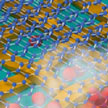 Inspired by the multiple water purification mechanisms of water hyacinth, a group of researchers has combined different decontamination techniques - adsorption, photocatalytic degradation, distillation - into a single paper-based composite system for water purification by using solar light as the clean energy input. Compared with water treatment with a single mechanism, the multifunctional composite reported in this work could significantly enhance the clean water generation efficiency and maximize the use of the broad-spectrum solar light in a facile and effective way.
Inspired by the multiple water purification mechanisms of water hyacinth, a group of researchers has combined different decontamination techniques - adsorption, photocatalytic degradation, distillation - into a single paper-based composite system for water purification by using solar light as the clean energy input. Compared with water treatment with a single mechanism, the multifunctional composite reported in this work could significantly enhance the clean water generation efficiency and maximize the use of the broad-spectrum solar light in a facile and effective way.
Jun 14th, 2016
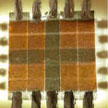 Using multilayer graphene as an electrically reconfigurable optical medium, researchers have demonstrated an optoelectronic framework compatible with conventional printing paper. The device consist of two multilayer graphene layers transfer-printed on both sides of the paper. In this configuration, multilayer graphene simultaneously operates as the electrically reconfigurable optical medium and electrically conductive electrodes. In addition, the paper substrate yields a flexible and foldable mechanical support for the graphene layers and it holds the electrolyte in the network of hydrophilic cellulose fibers.
Using multilayer graphene as an electrically reconfigurable optical medium, researchers have demonstrated an optoelectronic framework compatible with conventional printing paper. The device consist of two multilayer graphene layers transfer-printed on both sides of the paper. In this configuration, multilayer graphene simultaneously operates as the electrically reconfigurable optical medium and electrically conductive electrodes. In addition, the paper substrate yields a flexible and foldable mechanical support for the graphene layers and it holds the electrolyte in the network of hydrophilic cellulose fibers.
Jun 8th, 2016
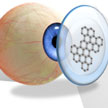 The latest example of a graphene-based wireless sensor that could make 24-hour healthcare easier to achieve by enabling wireless monitoring of various biomedical events in order to gain a more comprehensive assessment of the wearer's healthcare status. This novel device, which detects chemical/molecular agents and lengths of exposure, can be used as lightweight and transparent wearable or bio-implantable electronic sensor. It may provide an inexpensive way to detect in real-time the biomedical of interest.
The latest example of a graphene-based wireless sensor that could make 24-hour healthcare easier to achieve by enabling wireless monitoring of various biomedical events in order to gain a more comprehensive assessment of the wearer's healthcare status. This novel device, which detects chemical/molecular agents and lengths of exposure, can be used as lightweight and transparent wearable or bio-implantable electronic sensor. It may provide an inexpensive way to detect in real-time the biomedical of interest.
Jun 6th, 2016
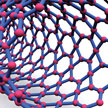 In view of the scientific and technological potential of CNTs, it is of immense importance to know who should be credited for their discovery. In the present article, we have made an attempt to give a glimpse into the discovery and early history of this fascinating material for our readers. Carbon nanotubes possess unique combination of extraordinary mechanical, electronic, transport, electrical and optical, properties and nanoscale sizes making them suitable for a variety of applications ranging from engineering, electronics, optoelectronics, photonics, space, defence industry, medicine, molecular and biological systems.
In view of the scientific and technological potential of CNTs, it is of immense importance to know who should be credited for their discovery. In the present article, we have made an attempt to give a glimpse into the discovery and early history of this fascinating material for our readers. Carbon nanotubes possess unique combination of extraordinary mechanical, electronic, transport, electrical and optical, properties and nanoscale sizes making them suitable for a variety of applications ranging from engineering, electronics, optoelectronics, photonics, space, defence industry, medicine, molecular and biological systems.
Jun 3rd, 2016
 Currently in the clinic and in clinical development, there is heavy emphasis placed on understanding how drugs can be 'complementary'. That is to say, what combination of drugs will be most effective in killing tumor cells and overcome potential resistance mechanisms. In fact, adding synergistic combinations of drugs is reshaping how cancer is treated, even in the context of immunotherapy. A new study provides critical evidence that complementary drugs must be in spatial proximity to truly exert their synergistic potential.
Currently in the clinic and in clinical development, there is heavy emphasis placed on understanding how drugs can be 'complementary'. That is to say, what combination of drugs will be most effective in killing tumor cells and overcome potential resistance mechanisms. In fact, adding synergistic combinations of drugs is reshaping how cancer is treated, even in the context of immunotherapy. A new study provides critical evidence that complementary drugs must be in spatial proximity to truly exert their synergistic potential.
 Subscribe to our Nanotechnology Spotlight feed
Subscribe to our Nanotechnology Spotlight feed





